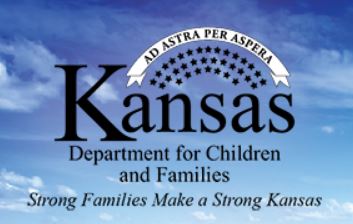TOPEKA – The Kansas Department for Children and Families (DCF) is pleased to announce, Kansas met the federal work participation rate for both overall and two-parent families for FY 2017, according to a recently-released letter from the Office of the Administration of Children and Families, a division of the United States Department of Health and Human Services (HHS). The participation rate measures how many adults are actively working toward preparing and searching for work. These activities include short-term vocational training, job searching and readiness training, high school or GED education and employment.
“We want to walk alongside Kansans in need, offer them support and serve as the spring board that propels families to become self-reliant and prosperous,” Secretary Gina Meier-Hummel said. “We positively impact thousands of lives every year, helping to build stronger, more successful families.”
According to the Office of Family Assistance, the U.S. Department of Human Services (HHS) issues TANF state work participation rates, which measure how well states engage families receiving assistance in certain work activities during a fiscal year. A state must meet either an overall (or “all families”) and a two-parent work participation rate or face a potential financial penalty.
DCF administers the public assistance programs in Kansas—including Temporary Assistance for Needy Families (TANF) and Supplemental Nutrition Assistance Program (SNAP).
“The recent letter from the ACF confirms what we have known—the HOPE Act is working and families are benefitting from its common-sense reforms,” Governor Jeff Colyer said. “We are empowering more families to gain employment and set them on a path of self-reliance.”
These successes are evident in the day-to-day lives of clients. In March 2018, a single mother applied for TANF. At the time of applying, she was unemployed, but met with her EES career navigator and completed a self-sufficiency agreement to work with a placement provider. Child care assistance was provided, transportation allowance was issued and other services were discussed.
The client expressed interest in renewing her cosmetology license, so EES paid for her to renew her license. In May, she reported that she is successfully employed as a Salon Manager. While her income placed her over the guidelines for TANF and SNAP, she continued to receive child care assistance.
This client recently expressed her gratitude for DCF and her career navigator:
“Thank you so much for all your help!!! You are amazing and have made what was a difficult time in my life, so much easier. You are so friendly, easy to work with, and I just can’t thank you enough for your time and dedication that you put into my case. I have come across several people at your office and none as caring, or willing, to do a good job as you have been and have done. I am very appreciative of you! Thank you so much!”
In addition to administrating public assistance programs in Kansas, DCF also funds numerous poverty-prevention programs focused on creating prosperous, healthy families.
One such program, Jobs for America’s Graduates-Kansas (JAG-K), is a multi-year program for students in grades seven through 12, that offers tools to successfully transition students into postsecondary school, the military or directly into the workforce with marketable skills.
JAG-K is primarily funded through Temporary Assistance for Needy Families (TANF) dollars. Funds are available through an annual federal block grant.
In 2017, JAG-K had a 98 percent graduation rate. This program has steadily and consistently helped remove barriers to success for youth in danger of dropping out of school.Kansas adopted the program in 2013.
The Kansas Reading Roadmap (KRR) is another DCF program funded primarily through TANF. KRR is a reading initiative, focused on literacy and poverty-prevention across the state. In one semester, KRR decreased the number of students struggling to read by 46 percent.
To learn more about public assistance programs or poverty-prevention programs in your area, please visit www.dcf.ks.gov

